I am working in Processing making contour maps from height maps using the blobDetection library. My end goal is to laser cut the blobs to make sort of architectural landscape maquettes.
Currently I can obtain the contours and export the contour map as SVG which is great, but I want to be able to identify each blob (or contour, or ring) and to then be able to manipulate each contour separately. Namely I want to reposition them on the window so that they are not on top of each other and do not overlap. I also want to assign coordinates to each individual blob so they would be easy to know where each blob goes once it has been laser cut.
Here is the code (from an example provided by author v3ga):
import processing.svg.*;
import blobDetection.*;
import peasy.*;
import processing.pdf.*;
PeasyCam cam;
PImage img;
float levels = 10;
float factor = 10;
float elevation = 125;
float colorStart = 0;
float colorRange = 160;
BlobDetection[] contours = new BlobDetection[int(levels)];
boolean recording = false;
void keyPressed(){
if (key == 'r' || key == 'R'){
recording = !recording;
}
}
void setup() {
size(1000,800,P3D);
surface.setResizable(true);
img = loadImage("map1.gif");
surface.setSize(img.width, img.height);
cam = new PeasyCam(this, img.width, img.height, 0, 500);
colorMode(HSB, 360, 100, 100);
for (int i=0; i<levels; i++){
contours[i] = new BlobDetection(img.width, img.height);
contours[i].setThreshold(i/levels);
contours[i].computeBlobs(img.pixels);
}
}
void draw(){
if (recording){
beginRecord(SVG, "frame_####.svg");
}
for (int i=0; i<levels; i++){
drawContours(i);
}
if (recording) {
endRecord();
recording = false;
}
}
void drawContours(int i) {
Blob b;
EdgeVertex eA,eB;
for (int n=0 ; n<contours[i].getBlobNb() ; n++) {
b=contours[i].getBlob(n);
if (b!=null) {
stroke(250,75,90);
for (int m=0;m<b.getEdgeNb();m++) {
eA = b.getEdgeVertexA(m);
eB = b.getEdgeVertexB(m);
if (eA !=null && eB !=null)
line(
eA.x*img.width, eA.y*img.height,
eB.x*img.width, eB.y*img.height
);
}
}
}
}
After testing a few things I think the best is to create and array of objects that contain information for each blob (x and y coordinates, level) and to fill this array in the drawContours method. However I am having a lot of trouble obtaining the right information to store in this array.
So my questions are:
- How to identify x,y coordinates of complex shapes such as these blobs
- How to reposition the blobs once I have their info store in an array
Any suggestion, even using other techniques (i.e. not Processing) would be greatly appreciated.
